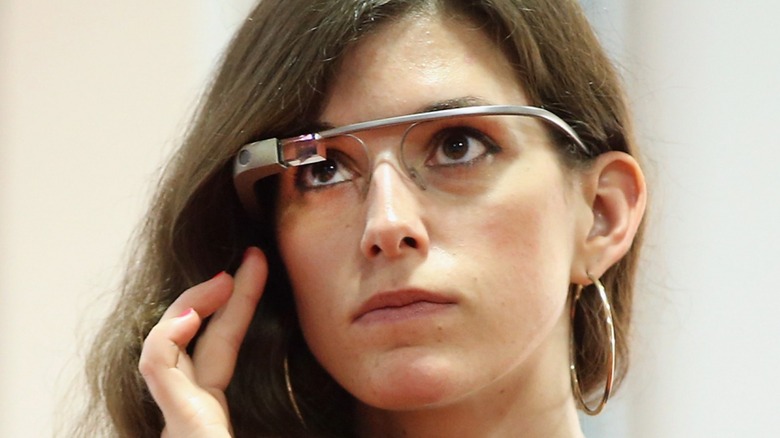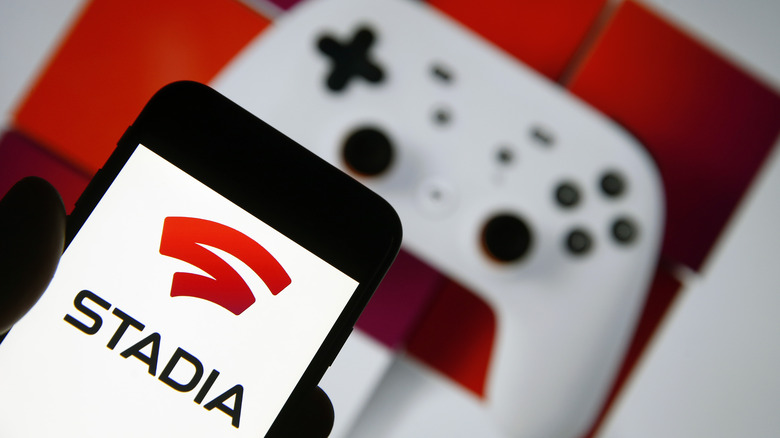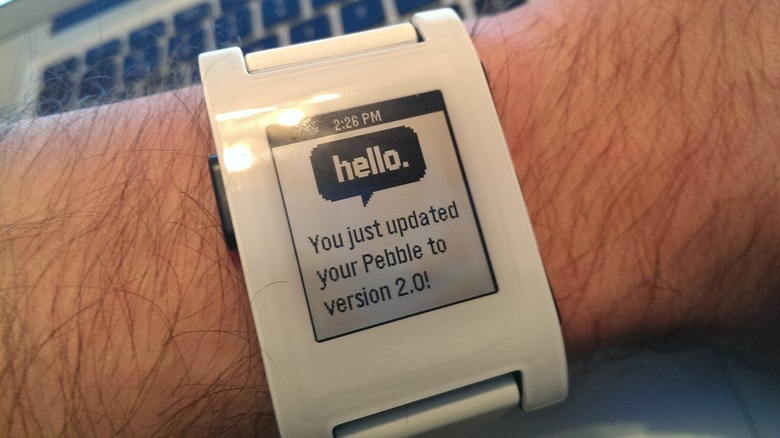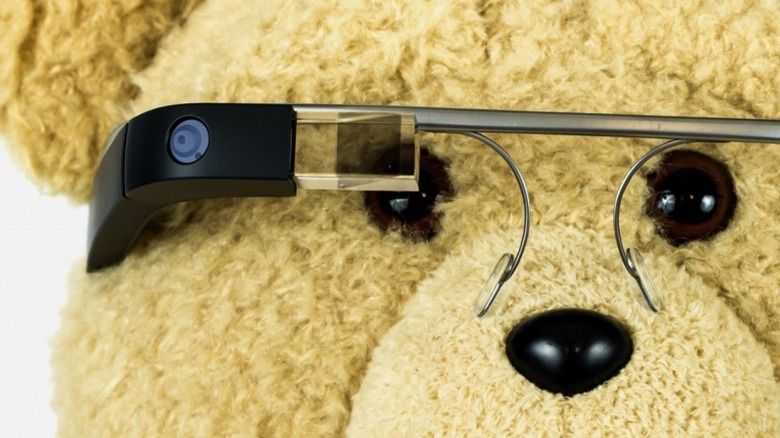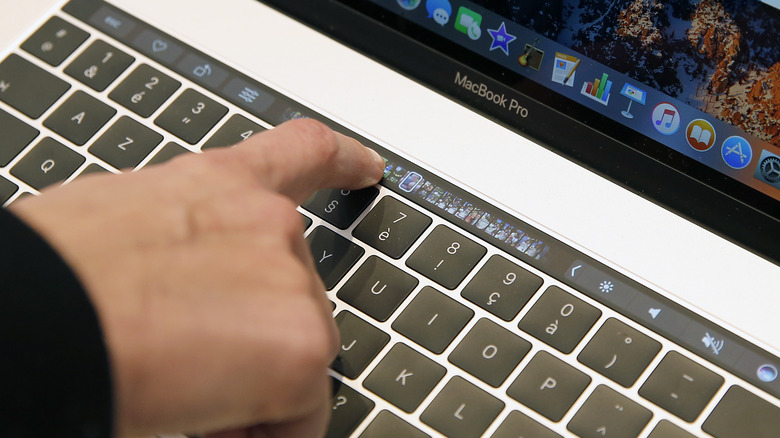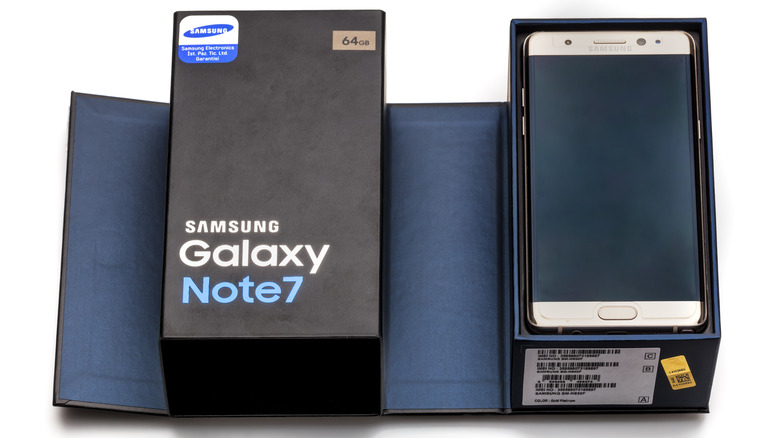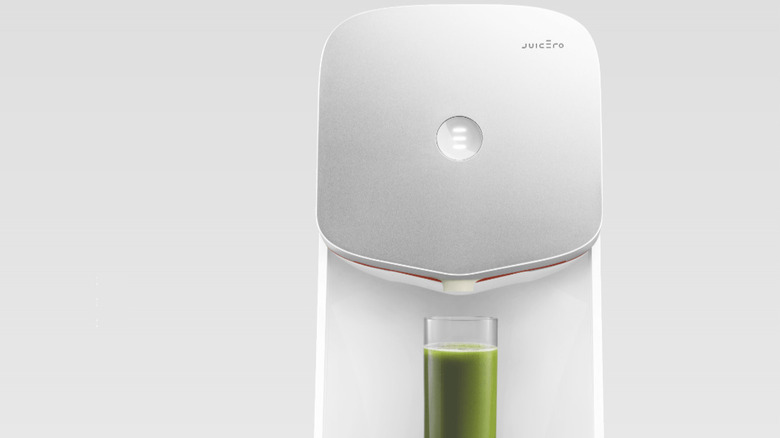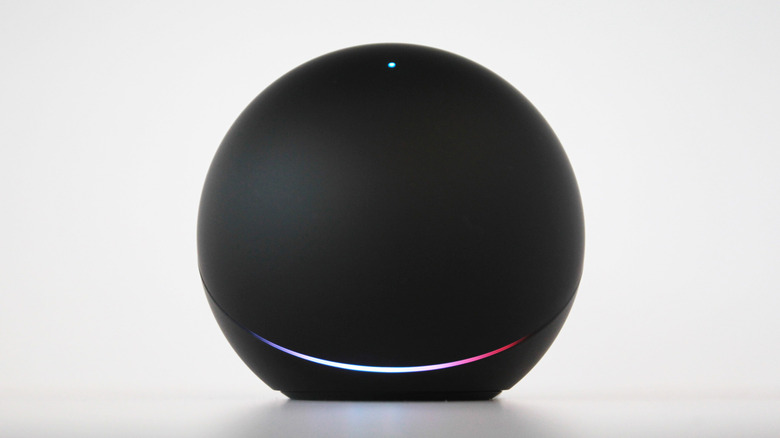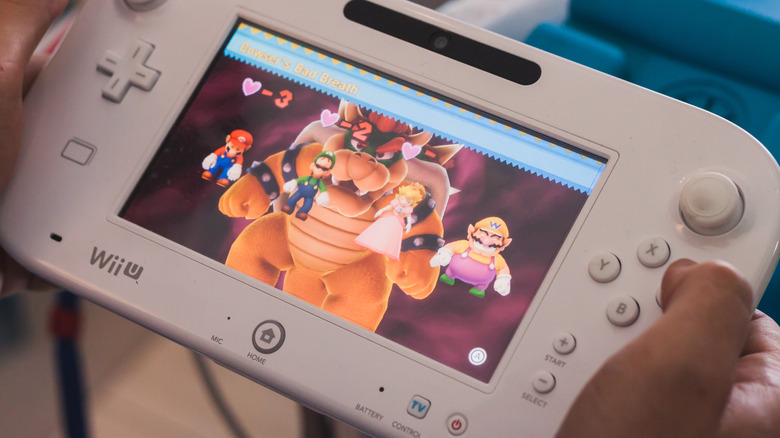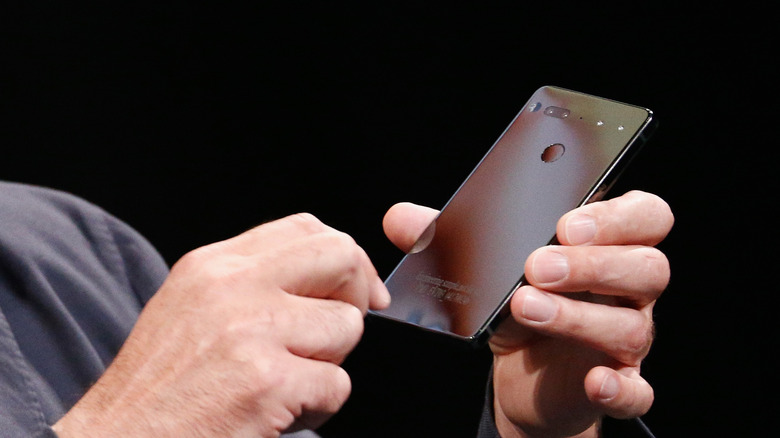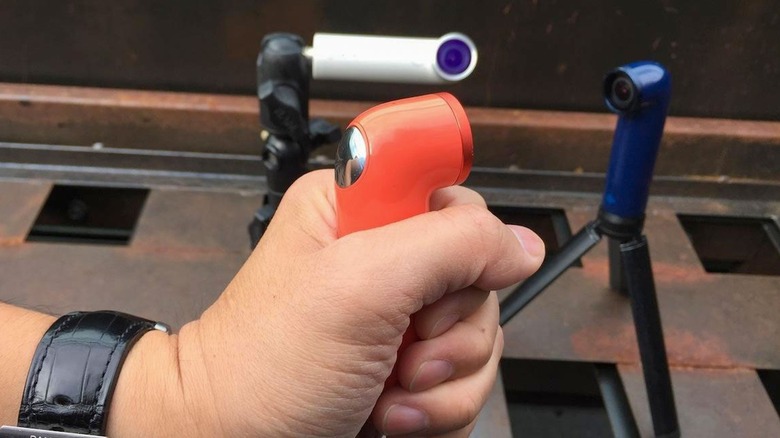Our Favorite Gadget Flops Of The Modern Mobile Age
With the tech and gadget market upping the ante every year, it's truly an exciting time to be alive. But not every device that hits the market will be a winner, and some will gain more notoriety than others when they crash and burn (sometimes quite literally).
Whether it's not meeting the market's requirements, not living up to the hype, or not being relevant to prospective consumers, we've covered a variety of high-profile gadget flops that fit the bill. These gadget failures reveal that even the most prominent players in the industry can stumble while seeking to innovate.
From Google Glass to Juicero, we'll examine what these infamous electronics brought to the table, why they fell from grace, and how they've contributed to tech advancements. So sit back, grab your obsolete device of choice — just so long as it's not too old — and join us for a dive into the tech archives.
Google Stadia
Google Stadia was a cloud gaming platform that would allow gamers to play games (including graphic-intensive games) without depending on a local console or computer's processing power.
First tested in 2018, the premise was that Google would render games on its servers instead of the user's device. Meaning, with fast internet speeds, you could play a AAA game on your smartphone or laptop at the click of a button, similar to streaming a YouTube video. No waiting for the game to download, no performance issues, and no spending on a high-end console or desktop to run resource-intensive games — Stadia was set to revolutionize gaming.
But the service was plagued with issues from the beginning, including lag, poor image quality, and a limited games collection. It had just one lackluster exclusive title to compete with established and massively popular platforms like PlayStation and Xbox. And importantly, it wasn't priced and aimed at the right audience because most gamers would already have PCs or consoles to play games and wouldn't need cloud gaming.
Owing to these factors, Stadia gained little traction, eventually shutting down at the start of 2023. Nonetheless, Stadia's venture into the cloud gaming space spurred competition and innovation in the gaming industry, with established companies, like Xbox and Nvidia, making huge strides in cloud gaming.
Pebble Smartwatch
Pebble was one of the first smartwatches to hit the market in 2013, a good two years before the Apple Watch Series 1. The watch had impressive features for its time, including a seven-day battery life, an always-on display, Bluetooth connectivity, Android and iOS integration, third-party apps, notifications, and movement tracking. The Pebble smartwatch had a comfortable fit, a sleek plastic design that didn't covet attention, and a reasonable price too. So, what went wrong?
Pebble was ahead of its time, but with bigger players, like Apple and Samsung, entering the fray, it faced stiff competition and couldn't keep up with the rapid pace of innovation. Pebble also didn't do much to change its positioning from a watch for tech enthusiasts to a fitness-centric device. Fitbit eventually acquired Pebble's software assets and some of its employees in 2016. Regardless, it's evident that Pebble paved the way for smartwatch manufacturers by introducing handy features and capabilities that have since become standard.
Google Glass
In 2012, Google launched a pair of smart glasses called Google Glass. It displayed information on a heads-up display and could capture photos and videos, receive notifications, make phone calls, respond to voice commands, and help with directions. Sounds convenient for going hands-free, but the product wasn't ready for consumers. There were major privacy concerns (recording in movie theaters or casinos), physical discomfort with extended usage, no practical advantages over a smartphone, and unreasonably steep pricing.
Google discontinued the Glass prototype in 2015, but in 2017, it launched the Glass Enterprise Edition. The Enterprise Edition had a more powerful processor and improved design features, making it quite useful for people who needed information without engaging their hands in factory settings.
The Glass Enterprise Edition series, too, has been discontinued as of 2023, but according to a Google blog post, the company's testing AR prototypes. Armed with their Google Glass experience, the company's upcoming AR glasses product will likely be more intuitive and useful for consumers.
Apple MacBook Pro with Touch Bar
Apple's renowned for its iconic, trendsetting designs. That means pushing the envelope and making decisions that could potentially backfire — which happened with the late-2016 MacBook Pro with Touch Bar.
The Touch Bar's a strip of touch-sensitive glass above the keyboard that replaces the function keys. It was supposed to be a versatile addition to make it easier to access standard functions while presenting new ways to interact with different apps. Although fancy, the Touch Bar didn't do much to enhance productivity. Using shortcut keys was easier and quicker than reaching up to use the Bar. And based on your Touch Bar setup, simple functions, like changing the volume or brightness, could require two or three taps instead of a single key press — unwanted convolution.
Muscle memory was another issue. After getting accustomed to using your keyboard a specific way, adjusting to the Touch Bar demanded some unlearning. Not to mention, the high price tag didn't offer any respite. The silver lining? The Touch Bar is undoubtedly setting the stage for more advanced touch interfaces in laptops that deviate from the standard keyboard design while improving functionality.
Samsung Galaxy Note 7
Launched in 2016, Samsung's Galaxy Note 7 was a powerful phone that received raving reviews and would've given tough competition to Apple. But it instead made the company lose billions because the phones started catching fire and putting people and properties at risk.
After multiple recalls, Samsung permanently discontinued the Note 7 two months after launch, initiating a total recall. According to Instrumental, a tech manufacturing firm, the Note 7's "aggressive design caused battery explosions." They explained that the batteries were stuffed in cases without enough space to account for battery swelling or safely house the battery's positive and negative layers. Samsung itself reported similar findings.
Samsung faced a considerable financial and reputational setback, but this gadget flop served as a cautionary tale for the smartphone industry to prioritize safety and quality control. The company launched a thorough investigation to understand what caused the issue and also set up a battery advisory group and stringent new protocols to ensure maximum safety on their devices.
Juicero
Juicero was a startup that raised over $118 million with a promise to revolutionize juice preparation. The company's $699 Wi-Fi-connected juicer (later reduced to $399) would squeeze pre-packaged juice pouches with enough force to extract every drop of juice.
Juicero created and sold exclusive juice pouches on a subscription basis ($35/week) for the machine, further adding to the costs. The machine would work only after its camera scanned the pouch's QR code to evaluate its freshness and confirm that it was from Juicero. But it needed an internet connection to do that and wouldn't operate without Wi-Fi, severely limiting its utility.
This product was not just extremely expensive to manufacture, it was entirely too expensive for the average consumer to buy and keep running. The company received a lot of flak, but its failure highlighted the importance of understanding customer needs, building products that offer real value, and cost-effective innovation.
Nexus Q
Google launched the Nexus Q in 2012 as a media player that would stream music or videos from the cloud and simplify music sharing by letting users build collaborative playlists through their smartphones or tablets. It was meant to make a splash at Google I/O 2012, and that it did — but the end product didn't quite fit in with the real world.
The Nexus Q had an intriguing sci-fi orb design with a cool glowing ring around it. In Nexus Q's introductory video, Joe Britt, Google's then Director of Engineering, said, "When I think about the ways that I enjoyed music when I was younger, it was a very social interaction. And so with Q, we are really hoping to create a renaissance around those kinds of social experiences."
Making a bold statement like that implied they were developing a solution that'd be easily accessible by everyone while offering a seamless user experience. But the Q was lacking in both aspects. In 2012, Android dominated 48.5 percent of the smartphone market, so by limiting Nexus Q's compatibility to only Android, Google effectively cut its user base by half. The app interface and software for controlling Nexus Q weren't smooth and hindered the user experience. Nonetheless, Google wasn't deaf to the Q's lukewarm reception, and after cutting off preorders by the end of July 2012, the device was delayed indefinitely.
The good news is that Google incorporated its learnings from Nexus Q into building massively successful products like Chromecast and Google Home.
Nintendo Wii U
The Nintendo Wii U was a home video game console with a controller unlike any other at that time — it had a 6.2-inch built-in touchscreen, camera, motion controls, speakers, microphone, and stylus.
Sounds fancy, but the console's marketing was confusing. Wii U's introductory video announcement at E3 2011 was loaded with phrases highlighting the controller, making it seem like an accessory for the old Nintendo Wii. And the controller's large display gave the impression that it was a portable gaming system, which it wasn't — this was evident when the device was released in November 2012.
Wii U's hardware was problematic, too, because a year after launch, the PlayStation 4 and Xbox One came out with specs that felt light-years ahead. Wii U's hardware limitations meant developers couldn't build games that could go toe-to-toe with Nintendo's competitors.
The Wii U had a slight price advantage over the PS4 and Xbox, but its storage options (8 or 32 GB) paled in comparison to their 500 GB internal storage. Adding external storage increased the cost, not justifying the Wii U's price. After four years of dismal sales, Nintendo announced stopping Wii U production in late 2016.
Although the Wii U was a disaster for Nintendo, it laid a foundation for its successor — Nintendo Switch. Nintendo did everything right with the Switch, from clear messaging around its portability to competent hardware and a broader collection of games, resulting in sales of over 122 million units. In contrast, the Wii U's lifetime sales were a comparatively abysmal 13.56 million units.
Essential Phone
The Essential Phone was a much-hyped smartphone from Android's creator, Andy Rubin. It garnered attention in 2017 for its unique bezel-less build, highly durable titanium frame, and uber-premium ceramic back. The phone hit the market a few months before the iPhone X — when some even major-label smartphone designs still had thick bezels at the top and bottom of the screen.
Another exciting aspect of the phone was its modularity. It had magnetic pogo-pins on the back to attach accessories and expand functionality. Despite its stunning design, the Essential Phone didn't gain traction in the market and was discontinued after a year.
The phone was priced high at $699 while lacking the brand recognition and marketing muscle of established players like Apple and Samsung. Its camera wasn't spectacular, and it lacked water resistance and wireless charging — standard features at that price point. Then there was the issue with its sales channels. The Essential Phone was only available through Essential's website, Best Buy, and Sprint. Although the phone would work with other carriers, Essential partnered exclusively with Sprint, limiting its reach. The company also didn't implement its modularity plans effectively, offering just one mod during the launch.
These issues and a delayed release hurt Essential Phone's reputation, making it a tough sell for consumers. Essential's failure showed that even a quality product with a unique design could fail if it was priced too high, didn't meet the market's needs, and lacked appropriate sales channels for easy purchases.
HTC Re
The HTC Re was a camera released in 2014 that looked like a mini-submarine periscope. It had a 16-megapixel camera with a 146-degree wide-angle lens to capture photos and record videos in Full HD and HD. What was the point of this compact cylindrical camera when smartphones already had cameras? HTC wanted to redesign the photo-capturing experience by helping users stay in the moment rather than witness it through the smartphone's display.
To that end, the Re had a super-simplified design ensuring photo capturing was effortless and distraction-free — there was no viewfinder or display. Thanks to the touch sensors, it'd automatically awaken from a dormant state when picked up, and there was an app to integrate it with your smartphone.
Regardless of the device's interesting approach to transforming the photo-clicking experience, it didn't resonate with the market. At $199, the HTC Re wasn't exactly a budget device. Its lack of a viewfinder, average image quality, and unusual design choices couldn't compare to feature-rich action cameras like the GoPro.
Ultimately, the HTC Re had poor sales and felt like a vague device — not as useful as an action camera and too unusual for a regular camera. Re's failure emphasized the importance of researching the market to offer features that consumers would considerably benefit from and appropriate product positioning.
